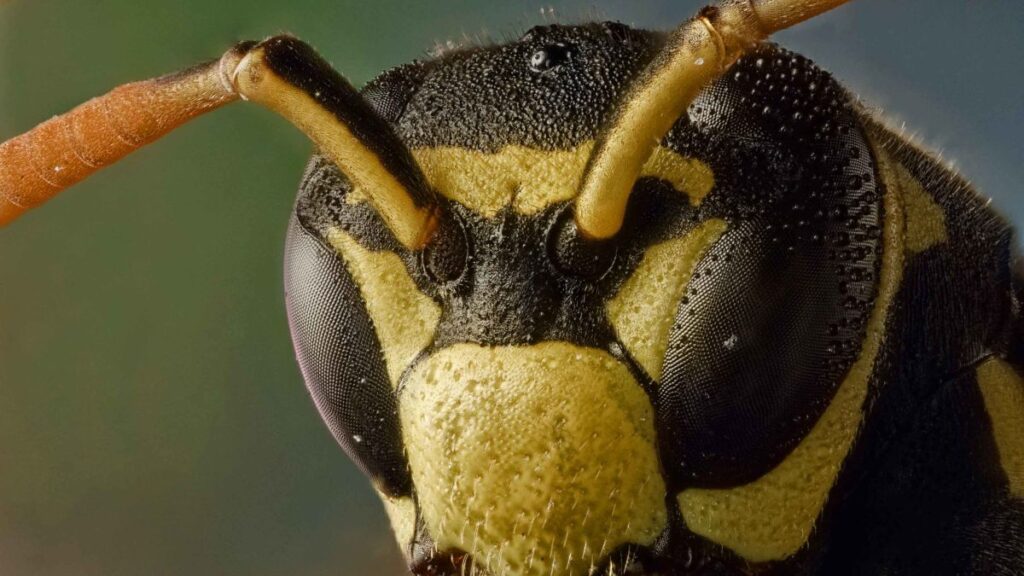HUNTING THE WASPS’ NEST
There’s a good reason for staying on the subject of wasps this month. The calls we’ve been receiving suggest that this is the pest causing the majority of problems at the moment.
In the previous blog about wasps, I mentioned that finding a wasps’ nest would be a signal for you to call for professional help. But what if you think you have a persistent community of wasps invading your home or garden – but you can’t see a nest? And why do these pesky insects arrive just in time to spoil your summer picnics?

The life cycle of wasps
The most commonly noticed species of wasps – Vespa vulgaris – make their nests from dead wood scraped from untreated timber or dead trees, chewed to powder and glued with saliva. The queen lays eggs that were fertilised during the previous autumn’s mating flights and the first new worker wasps hatch soon after. The workers bring flower nectar and honeydew produced by aphids to feed the new larvae and feed in turn on the sugary goo exuded by the larvae.
During summer wasps become more active and will venture further from the nest in search of sugary, energy-rich foods – at about the same time as humans take their meals outside. That’s why there’s always wasps inviting themselves to your picnic.
In autumn, the wasp colony abandons the nest. The queen mates and finds a dark, dry place to hibernate, and the drones die. With no workers to maintain it, the nest falls apart over winter. Because wasps build a new nest in spring and expand it in summer, wasp nests have seasonal sizes;
- Golf ball size in spring to early summer
- Football size in July and August
- Up to beachball size in autumn.
- They will also fit their nest into cavities and gaps. Look for a hole in a wooden wall or a hollow in a tree with a lot of wasps entering and exiting.
Inventive Insects…
You would not believe the different places that wasp colonies have built their nests. I mentioned the large papery structures constructed under the eaves of a house, but wasp nests have also been found;
- In holes in the ground, as honeycombed cells
- In trees – either attached to a branch or in a hollow of a dead tree
- In lofts, garages, sheds and log stores
- In wall cavities
- Under raised decking
- In dog kennels, bird boxes and horse stables
- In fact – anywhere dry, dark and quiet.
If you see several wasps…
It’s probably there is a nest nearby. It will help us if you can trace where that nest is, but please make sure you aren’t putting yourself in danger. Move calmly and treat it as tracing the nest rather than seeing whether you can destroy it yourself.
Tracing the nest
Try leaving a small amount of bait near to where you often see wasps and watch from a safe distance. Crumbs of honeycomb or a pile of sugar granules are ideal – sweet, light, easy for a wasp to transport back to the nest. Don’t put out too much, or you might attract more wasps than you already have.
Follow the flight of wasps from the bait to the nest. You might see nothing more than a hole in the fascia boards under your eaves, or wasps disappearing into bushes, but listen for the steady buzz and the constant entrance and exit of wasps. Be aware that seeing wasps congregating around a tree might not mean that they have built a nest there – some trees exude a sweet sap and some insects smear honeydew on the leaves they have been eating, both of which attract hungry wasps. We receive large numbers of calls to wasps congregating around willow trees which produce a sweet sap, that attracts wasps in large numbers towards the end of the season.
If you think the nest is on your neighbour’s property, ask them if they’ve noticed an increase in the number of wasps near their home recently and tell them what you’ve observed.
Wasps, Stay Away!
You can discourage wasps from setting up a nest in your home or garden in the first place. Remember, they are looking for an easy food source and a dark, dry space.
- Put up mesh screens over open windows to keep wasps out of the house
- Run a visual inspection in spring – fill small holes in fascia boards, check open-fronted structures like log-stores and crevices in piled timber
- Keep your dustbins and food waste bins closed with tight-fitting lids
- Collect and dispose of fruit fallen from trees before the wasps discover it
- Inspect the rarely used places – shed, garage, loft, even the spare room – for signs that wasps are beginning to set up a nest
Even if you can’t find the nest, give us a call if you’re concerned about the number of wasps you’re seeing. We will do our best to trace the nest and evict your wasps.

